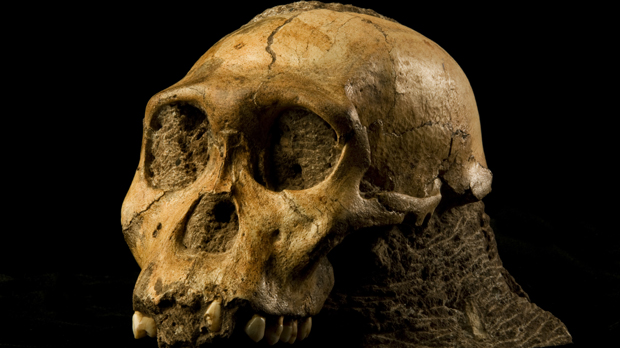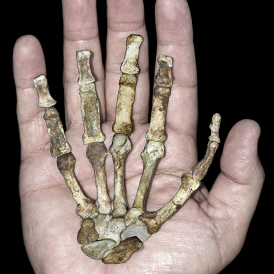Missing link between man and apes discovered
Scientists in South Africa say they have discovered a potential missing link in the evolutionary chain between humans and our earliest ancestors.

Scientists in South Africa say they have discovered a potential missing link in the evolutionary chain between humans and our earliest ancestors.
In a paper to be published in the journal Science, the team claim that unique features of an early ape-like species Australopithecus sediba combine features of apes and humans which have never been seen before.
Australopithecus sediba was first found in 2008 by the then nine-year-old son of the report’s author Professor Lee Berger, as they investigated the Mapala Fossil Site in South Africa.
Since that was unearthed it has been generally thought that Australopithecus sediba could help us understand the evolutionary change from apes to humans.
The fossils show an amazingly advanced but small brain, a very evolved hand with a long thumb like a human’s. Professor Lee Berger
The new papers will reveal the most complete hand ever described in an early hominin (humand and their ancestors), the most complete pelvis, the most accurate scan of an early human brain, new sections of the foot and ankle skeleton, and one of the most accurate, if not the most accurate dates ever achieved for an early hominin site in Africa.

According to Professor Berger, who is based at the Institute for Human Evolution at the University of the Witwatersrand in Johannesburg, South Africa, Australopithecus sediba shows a remarkably unique mixture of features, never before seen in an early ancestor.
He said: “The fossils show an amazingly advanced but small brain, a very evolved hand with a long thumb like a human’s, a very modern pelvis, but a foot and ankle shape never seen in any hominin species that mixes features of both apes and humans in one anatomical package.
“The many very advanced features found in the brain and body, and the earlier date makes it, more so than earlier discoveries such as Homo habilis.”
Since its discovery in August 2008, the site of Malapa has given us more than 220 bones of early hominins, representing more than five individuals, including the remains of babies, juveniles and adults.
Given the open access policy of the team, sediba is already one of the best studied hominin species.
The team studying the fossils is one of the biggest ever put together in the history of archaeology or palaeontology, made up of more than 80 experts.
-
Latest news
-
Laughing Boy: New play tells the tragic tale of Connor Sparrowhawk5m

-
Sewage warning system allows some of worst test results to be left off rating system, analysis shows3m

-
Post Office inquiry: Former CEO didn’t like word “bugs” to refer to faulty IT system4m

-
Israeli soldier speaks out on war in Gaza12m

-
PM’s defence spending boost should be ‘celebrated’, says former Armed Forces Minister4m

-




